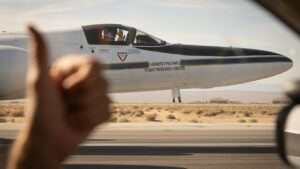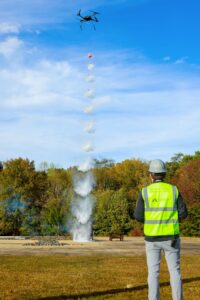
China has made significant progress towards its goal of sending astronauts to the moon by 2030. This week, the country conducted successful landing and takeoff tests for its two-person lunar lander, known as Lanyue, at a specialized facility in Huailai County, located in northern Hebei Province. The name Lanyue translates to “embracing the moon,” reflecting its purpose as a crew-carrying vehicle for China’s upcoming human lunar exploration mission.
This critical test, completed on August 6, 2023, marks a milestone in the development of China’s lunar program. It is the first time the nation has performed trials for the landing and takeoff of a crew-carrying spacecraft beyond Earth, according to the China Manned Space Agency (CMSA). The tests evaluate the lander’s performance under various scenarios during both landing and ascent processes.
Huang Zhen, a representative from the China Aerospace Science and Technology Corporation (CASC), which is responsible for developing and launching rockets and spacecraft for the China Lunar Exploration Program (CLEP), detailed the importance of the tests. “During the launch phase, we need to verify its launch payload. So we conducted large-scale mechanical tests to ensure a smooth transition in the extremely complex environment during the launch,” he explained to the state-run broadcaster China Central Television (CCTV).
Prioritizing Safety and Performance
The Lanyue lunar lander is designed to transport two crew members to the moon’s surface and is also capable of carrying a lunar rover and scientific equipment. Safety remains the utmost priority in its design. “The lander has multiple engines arranged in a redundant configuration to back each other up. In the event of a failure of any single engine, the remaining engines can safely bring the astronauts back to lunar orbit, enabling them to return home to Earth,” Huang stated.
During the recent tests, Lanyue’s engines were ignited to simulate its landing on the moon and subsequent ascent. This testing validated key systems, including the lander’s landing and takeoff protocols, control plans, and shutdown procedures. It also assessed the compatibility of various subsystems such as guidance, navigation control (GNC), and propulsion.
Design Challenges and Innovations
For manned lunar missions, ensuring a comfortable and smooth landing is essential. The Lanyue lander features four landing legs designed to provide exceptional cushioning during touchdown. “The lander undertakes a multitude of tasks, presenting significant design challenges. Every bit of weight has to play a role in several functions, so we have to achieve the ultimate in integrated design and lightweight construction,” Huang noted.
CASC has focused on minimizing weight without compromising functionality. “We have employed every possible method to minimize weight, achieving the most complex and sophisticated design purpose with the least launch weight,” Huang added.
With these successful tests, China continues to advance its ambitious plans for lunar exploration, moving closer to its target of sending astronauts to the moon by 2030. The achievements of the Lanyue lander signify a vital step in this journey and underscore China’s commitment to expanding its capabilities in space exploration.







